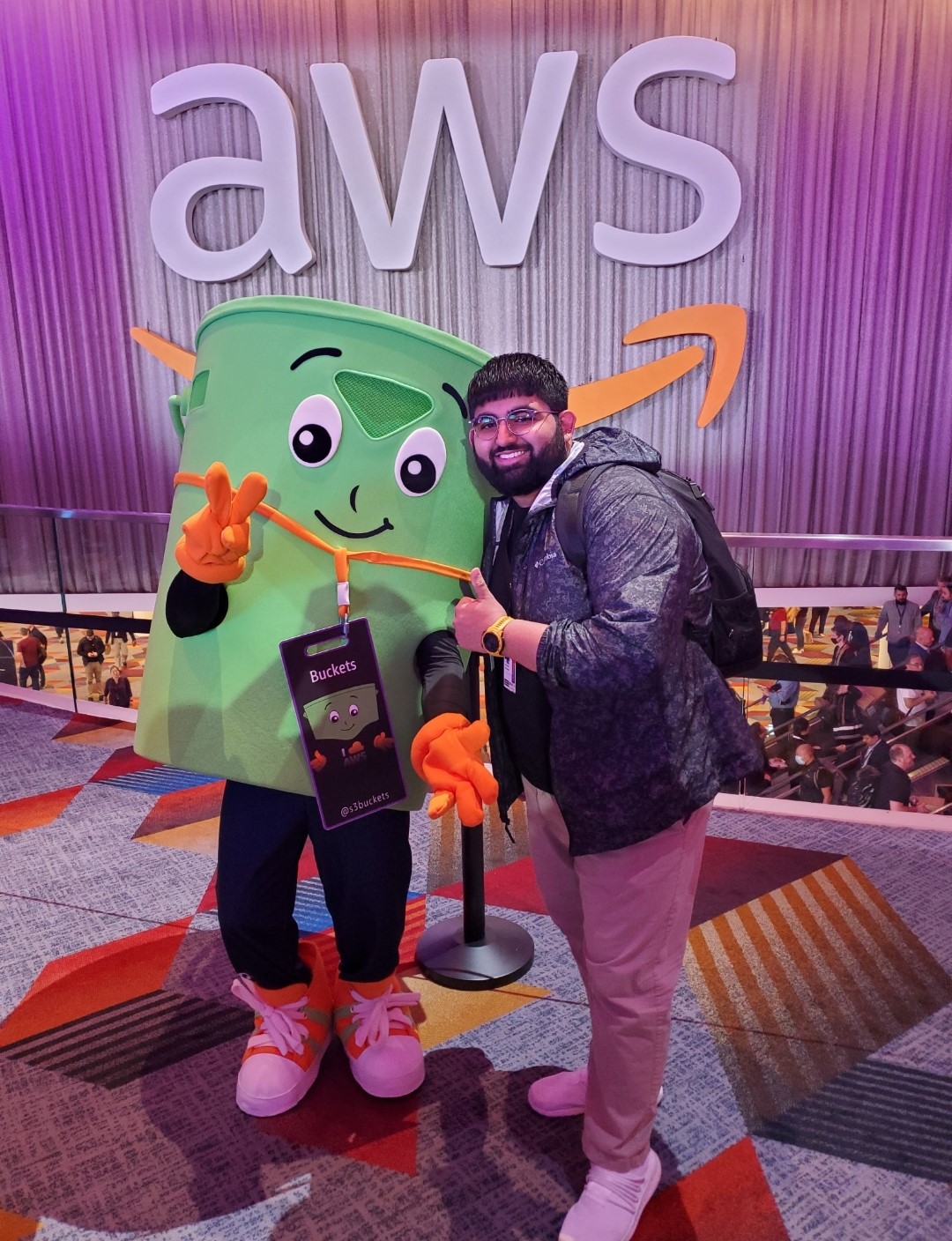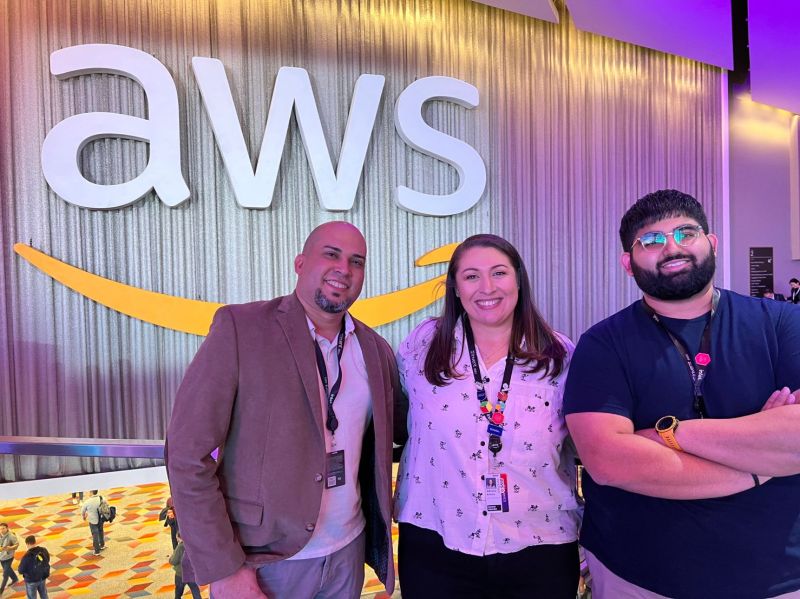- Published on
AWS re:Invent 2022 Recap
- Authors

- Name
- Samad Ahmed
This was my second year at re:Invent. Aside from the long wait to grab a Lyft from the airport, the event (and food) was awesome.

I went in with a schedule planned around machine learning technologies but after day one, my feet were hurting so bad that I ended up changing my schedule to stick around within the Venetian (my homebase) and choose talks, workshops, and sessions centered around tooling and optimization. I don't regret it at all because I learned so much, especially from talking to architects and other developers.




Takeaways
Here are some of my opinions on the things I saw and learned in a week's span.
Amazon CodeCatalyst
This seems cool in the sense that it really ties in all areas of the AWS Code* suite. Personally, I felt that CodeCommit, CodeBuild, and CodePipeline all felt really distinct as services and most devs that I have talked to (including myself) don't really like these services when it comes to comparing the alternatives. However, this unified approach of essentially combining all the services into a single service can possibly be a revival.
For onboarding new devs, it seems great if used in a large team. I mean, everything is practically in a single place so it's quite easy to deal with issue tracking, the code base, and pipelines. It also seems useful to use if you're a solo developer since you don't really need to use a bunch of tools.
The plugins are great (but minimal). Clearly, AWS will add more in the future but for now it is lacking. There is also no public repos as far as I can tell and and no LFS either. It isn't really a dealbreaker, but it's something to consider.
The best thing about this tool is the blueprints to get started quickly and the workflows. It is intuitive and all of them are parameterized so creating the devfile and switching between environments is easy.
That being said, when the architect showed me this demo, my immediate thought was that this was an attack towards GitLab and GitHub. I think for AWS, it will be hard to convince users to switch over to CodeCatalyst. However, it can be a total gamechanger if AWS provides CodeWhisperer to run within pipelines. The architect I was speaking to said that this was on the roadmap, so it will be interesting to see the landscape of software project management shift.
Developer Ergonomics
Most of my career (up to this point) has been involved in either working in monolithic codebases or microservices. I've done some work in serverless architecturally, but not a whole lot aside from serverless "side-car" operations such as snapping lambda functions to process events, call other services, batching, etc.
I've experimented with serverless frameworks and IaC before, but not so much with the "AWS-way" of doing things using CDK and SAM CLI. So I decided to attend a workshop where I created a serverless API and developed/debugged it locally using the CLI tools.
I loved working with the tools so much. It's quite easy to use and in my current job, I can actually see myself incorporating it as a part of my development flow. Most of my work nowadays is building data pipelines that usually have a lambda function operating behind the scenes.
Startup Loft
As an indie dev, I spent a lot of time networking in the startup loft. It was eye-opening hearing the perspectives and lessons learned by founders, VCs, and CXOs. It was particularly enjoyable since these sessions offered more room for Q&A and a more interactive experience.
I attended talks centered around reducing cloud startup costs, preventing neglectful security practices as you grow through stages, stories from women founders, and tips on fundraising from VCs.
Open Source
In general, AWS has always been seen behind when it comes to open source when you compare the work they have done versus Microsoft and Google. But, it really seems that AWS has strengthened the initiative. Specifically, the effort placed on Amplify and Amplify Studio.
I think as an indie-dev or a small team, this works great. I like that the libraries and components are open source and that the hosting/infrastructure side is totally seperate. This is great, because it makes it more extensible and you can bring your own infrastructure components and existing resources.
I also visited the Open Source Zone and saw various demos. The one that stood out the most was AWS Copilot, which is a CLI tool for launching containers on Fargate and ECS. It has a similar to feel to SAM CLI which I liked (so the usage is easily inferred without much context switching between them).
You can build via a manifest file for certain configurations. But, instead of using individual services, the necessary infrastructure can be generated based on the common architecture pattern needed for the task (whether it be a scheduled job, worker, backend service, etc). This reduces developer fatigue and gives you the best practices by default. It's built with Go.